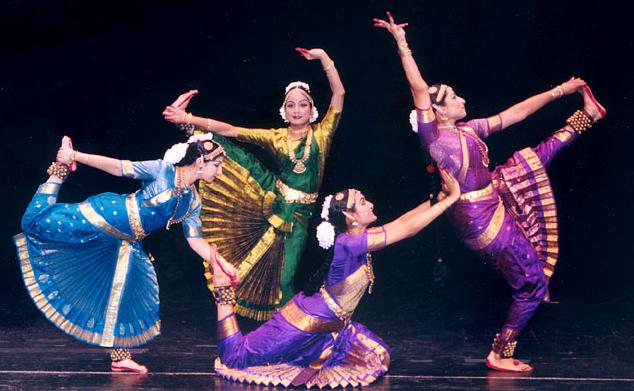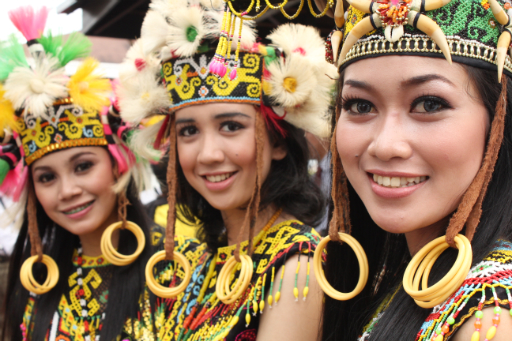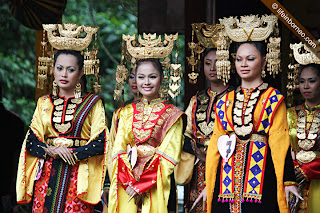Tuesday, August 9, 2016
Malaysian Airlines
ONE OF THE ONLY 5 STAR AIRLINES IN THE WORLD...
There is just a handful of 5 star rated airlines in the world and Malaysia Airlines is one of them. The national carrier impresses through exceptional on-board service and this was also confirmed by winning the Skytrax service award.
Based at Kuala Lumpur International Airport, the airline serves numerous destinations around the world including flights to Europe, America, Australia and Africa. It recently became one of the few carriers to operate the Airbus A380 Airbus
My Hometown
A place with UNESCO world heritage!
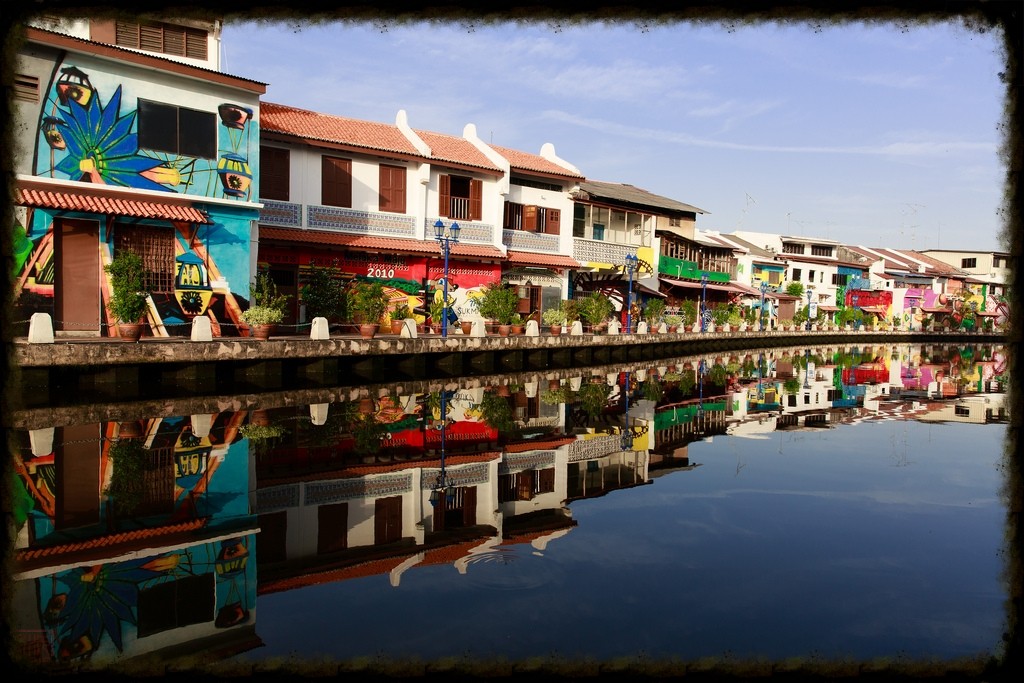

IN A BEAUTIFUL PLACE CALLED MALACCA...
Malacca is a little pearl located just before the Strait of Malacca. It has been under occupation ever since 1509, first by Portuguese settlers and then later by Dutch, French and British. Every occupant ended up contributing a little bit into what Malacca is known for today - a colorful and vibrant place, full of cultural heritage that has even been recognized by UNESCO in 2003.
Its colonial architecture is what put the label on this former fishing village. The Dutch Square or the Christ Church are the centers of attention of many visiting tourists from all over the world. Don't miss out on a walk along the Malacca River just as soon as the sun begins to set!
Its colonial architecture is what put the label on this former fishing village. The Dutch Square or the Christ Church are the centers of attention of many visiting tourists from all over the world. Don't miss out on a walk along the Malacca River just as soon as the sun begins to set!
Cultural Landmarks
Places you can visit when in Malaysia
Batu Caves
Batu Caves

China Malaysia Friendship Garden
Places to Visit in Melacca. Surely enjoyable, do visit when you're visiting.
Stadthuys
Jonker Street
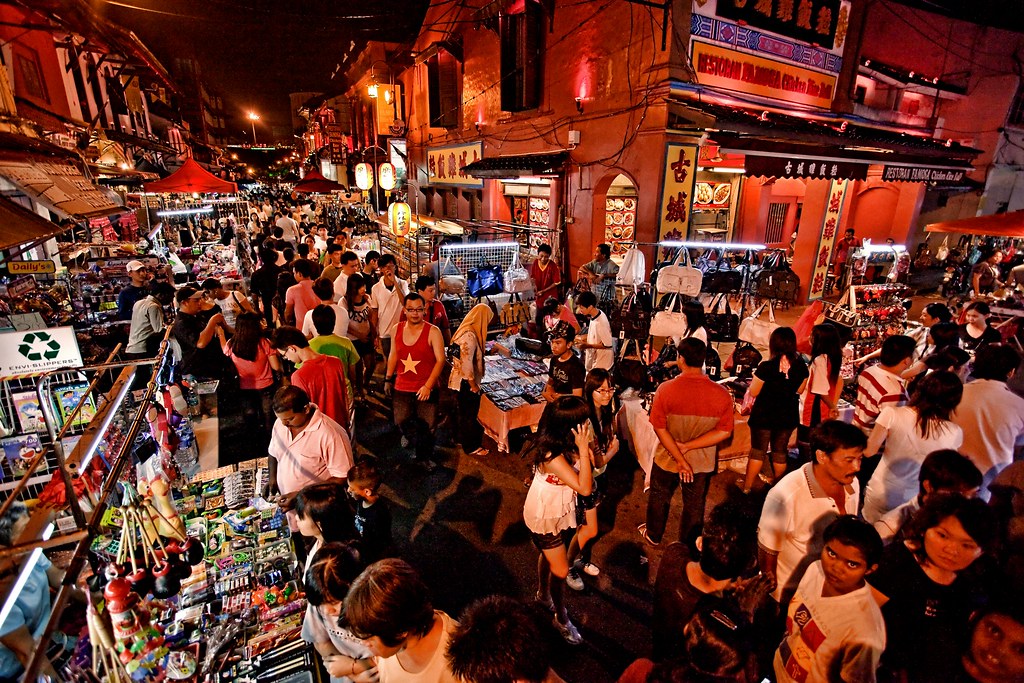
Beautiful Beaches to visit, tropical islands and beautiful weather !
Langkawi Island
Langkawi Island
Educational and historic for tourist !
State Museum Complex
State Museum Complex
Traditional Attire
Traditional Attire
You can even try out our different traditional costumes and have your picture taken as a souvenir !
A Dazzling Tapestry of Asian Traditions
From magnificent tribal head-feathers with bark body-covers to antique gold-woven royal songket fabric, the array of Malaysia's traditional costumes and textiles are stunningly diverse and colourful.
In the early days, the aboriginal tribes wore native bark costumes and beads. With the advent of the ancient kingdoms, hand-loomed fine textiles and intricate Malay batik were used by the Malay royalty. As foreign trade flourished, costumes and textiles such as Chinese silk, the Indian pulicat or plaid sarong and the Arabian jubbah a robe with wide sleeves were introduced to the country.
Today, traditional attire such as the Malay baju kebaya, Indian saree and Chinese cheongsam are still widely worn.
Ranging from the 3 Major Races to other Tribal Attires in East Malaysia !
Malay
 Before the 20th century, Malay women still wore kemban, just sarongs tied above the chest, in public. As Islam became more widely embraced, they started wearing the more modest yet elegant baju kurung. The baju kurung is a knee-length loose-fitting blouse that is usually worn over a long skirt with pleats at the side. It can also be matched with traditional fabrics such as songket or batik. Typically, these traditional outfits are completed with a selendang or shawl or tudung or headscarf.
Before the 20th century, Malay women still wore kemban, just sarongs tied above the chest, in public. As Islam became more widely embraced, they started wearing the more modest yet elegant baju kurung. The baju kurung is a knee-length loose-fitting blouse that is usually worn over a long skirt with pleats at the side. It can also be matched with traditional fabrics such as songket or batik. Typically, these traditional outfits are completed with a selendang or shawl or tudung or headscarf.
The traditional attire for Malay men is the baju melayu. The baju melayu is a loose tunic worn over trousers. It is usually complemented with a sampin - a short sarong wrapped around the hips.
Admiring all the different clothing of each particular culture in Malaysia !
Chinese
Comfortable and elegant, the traditional cheongsam or 'long dress' is also a popular contemporary fashion choice for ladies. Usually, it has a high collar, buttons or frog closures near the shoulder, a snug fit at the waist and slits on either one or both sides. It is often made of shimmering silk, embroidered satin or other sensual fabrics.
Hopefully it would be fun and intruiging !
Indian
The saree is the world-renowned traditional Indian garment. A length of cloth usually 5-6 yards in width, the saree is worn with a petticoat of similar shade and a matching or contrasting choli or blouse. Typically, it is wrapped around the body such that the pallau - its extensively embroidered or printed end - is draped over the left shoulder. The petticoat is worn just above or below the bellybutton and functions as a support garment to hold the saree. Made from a myriad of materials, textures and designs, the saree is truly exquisite.
Popular with northern Indian ladies is the salwar kameez or Punjabi suit; a long tunic worn over trousers with a matching shawl.
The kurta is the traditional attire for men on formal occasions. It is a long knee-length shirt that is typically made from cotton or linen cloth.
Cultural Dances
Chinese Lion Dance

Usually performed during the Chinese New Year festival, Lion Dance is energetic and entertaining. According to the legend, in ancient times, the lion was the only animal that could ward off a mythological creature known as Nian that terrorized China and devoured people on the eve of the New Year. Usually requiring perfect co-ordination, elegance and nerves of steel, the dance is almost always performed to the beat of the tagu, the Chinese drum, and the clanging of cymbals.
Dragon Dance
The dragon is a mythical creature that represents supernatural power, goodness, fertility, vigilance and dignity in Chinese culture. Typically performed to usher in the Chinese New Year, the Dragon Dance is said to bring good luck and prosperity for the year to come. Usually requiring a team of over 60 people, this fantastic performance is a dazzling display of perfect co-ordination, skill and grace.
Joget
Malaysia's most popular traditional dance, is a lively dance with an upbeat tempo. Performed by couples who combine fast, graceful movements with playful humour, the Joget has its origins in Portuguese folk dance, which was introduced to Melaka during the era of the spice trade.
Kuda Kepang
Kuda Kepang is a traditional dance brought to the state of Johor by Javanese immigrants. Dramatizing the tales of victorious Islamic holy wars, dancers sit astride mock horses moving to the hypnotic beats of a percussion ensemble usually consisting of drums, gongs and angklungs.
Sumazau
Sumazau is a traditional dance of Sabah Kadazan people. Usually performed at religious ceremonies and social events, it is traditionally used to honour spirits for bountiful paddy harvests, ward off evil spirits and cure illnesses. Male and female dancers perform this steady hypnotic dance with soft and slow movements imitating birds in flight.
Indian Bharata Natyam
This classical Indian dance is poetry in motion. Based on ancient Indian epics, this highly intense and dramatic dance form uses over 100 dance steps and gestures. As mastery requires many years of practice, some children begin learning the dance form at the age of five.
Monday, August 8, 2016
Artform
Wayang Kulit
Wayang kulit is a traditional theater form that brings together the playfulness of a puppet show, and the elusive quality and charming simplicity of a shadow play. The flat two-dimensional puppets are intricately carved, then painted by hand. It is either made of cow or buffalo hide. Each puppet, a stylised exaggeration of the human shape, is given a distinctive appearance and not unlike its string puppet cousins, has jointed "arms". Conducted by a singular master storyteller called Tok Dalang, wayang kulit usually dramatizes ancient Indian epics.
Silat
This fascinating Malay martial arts is also an international sport and traditional dance form. Existing in the Malay Archipelago for centuries, it has mesmerizing fluid movements that are used to dazzle opponents. It is believed that practicing silat will increase one's spiritual strength in accordance with Islamic tenets. Accompanied by drums and gongs, this ancient art is popularly performed at Malay weddings and cultural festivals.
Wau
A wau is a traditional kite that is especially popular in the state of Kelantan, on the East Coast of Malaysia. Traditionally flown after the rice harvest season, these giant kites are often as big as a man - measuring about 3.5 metres from head to tail. It is called wau because its shape is similar to the Arabic letter that is pronounced as 'wow'. With vibrant colours and patterns based on local flora and fauna, these kites are truly splendid sights.
Traditional Game
Experience the Expressions of Community
Malaysians' strong sense of community is reflected in many of their traditional games and pastimes. These activities are still played by local children on cool afternoons and are also a communal activity during festivities such as before or after the rice harvest season and weddings.
Sepak Takraw
Also known as sepak raga, it is a traditional ball game in which a ball, made by weaving strips of buluh or bamboo, is passed about using any part of the body except the lower arms and hands. There are two main types of sepak takraw: bulatan (circle) and jaring (net). Sepak raga bulatan is the original form in which players form a circle and try to keep the ball in the air for as long as possible. Sepak takraw jaring is the modern version in which the ball is passed across a court over a high net.
Gasing
A gasing is a giant spinning top that weighs approximately 5kg or 10lbs and may be as large as a dinner plate. Traditionally played before the rice harvest season, this game requires strength, coordination and skill. The top is set spinning by unfurling a rope that has been wound around it. Then it is scooped off the ground, whilst still spinning, using a wooden bat with a centre slit and transferred onto a low post with a metal receptacle. If expertly hurled, it can spin for up to 2 hours.
Congkak
Congkak is a game of mathematics played by womenfolk in ancient times that only required dug out holes in the earth and tamarind seeds. Today, it is an oval solid wood block with two rows of five, seven, or nine holes and two large holes at both ends called "home". Congkak, played with shells, marbles, pebbles or tamarind seeds, requires two players.
Orang Ulu
Orang Ulu
27 of the inland tribal groups of Sarawak are collectively called Orang Ulu or upriver people. A total estimated population of around 100,000 people belong to tribes varied in size from 300 to 25,000 individuals.
Arguably Borneo's most artistic people, their large longhouses are ornately decorated with murals and superb woodcarvings; their utensils are embellished with intricate beadwork. Traditional tattoos are a very important part of their culture; aristocratic Orang Ulu ladies also cover their arms and legs with finely detailed tattoos.
The aboriginal Penan people are also included as Orang Ulu by government census but the Penan are traditionally nomadic people living in small family groups constantly moving from place to place within the rainforest. Today most of the estimated 16,000 Penan people have settled in longhouse communities where their children have the chance to go to school. Like the Iban and Bidayuh, most of the Orang Ulu have converted from animism to Christianity or Islam.
Indigenous Ethnic Groups ( Sarawak )
Sarawak
Collectively known as Dayaks, the Iban, Bidayuh and Orang Ulu are the major ethnic groups in the state of Sarawak. Typically, they live in longhouses, traditional community homes that can house 20 to 100 families.
Iban
The largest of Sarawak's ethnic groups, the Ibans form 30% of the State's population of 2.5 million. Sometimes erroneously referred to as the Sea Dayaks because of their skill with boats, they are actually an upriver tribe from the heart of Kalimantan. In the past, they were a fearsome warrior race renowned for headhunting and piracy. Traditionally, they worship a triumvirate of gods under the authority of Singalang Burung, the bird-god of war. Although now mostly Christians, many traditional customs are still practised.
Bidayuh
Melanau
Indigenous Ethnic Groups ( Sabah )
Sabah
The largest indigenous ethnic groups of Sabah's population are the Kadazan Dusun, the Bajau and the Murut.
Kadazan Dusun
The largest ethnic group of Sabah, the Kadazan Dusuns form about 30% of the state's population. Actually consisting of two tribes; the Kadazan and the Dusun, they were grouped together as they both share the same language and culture. However, the Kadazan are mainly inhabitants of flat valley deltas, which are conducive to paddy field farming, while the Dusun traditionally lived in the hilly and mountainous regions of interior Sabah.
Bajau
The second largest ethnic group in Sabah, the Bajaus make up about 15% of the state's population. Historically a nomadic seafaring people that worshipped the Omboh Dilaut or God of the Sea, they are sometimes referred to as the Sea Gypsies. Those who chose to leave their seafaring ways became farmers and cattle-breeders. These land Bajaus are nicknamed 'Cowboys of the East' in tribute to their impressive equestrian skills, which are publicly displayed in the annual Tamu Besar festival at Kota Belud.
Murut
The third largest ethnic group in Sabah the Muruts make up about 3% of the state's population. Traditionally inhabiting the northern inland regions of Borneo, they were the last of Sabah's ethnic groups to renounce headhunting. Now, they are mostly shifting cultivators of hill paddy and tapioca, supplementing their diet with blowpipe hunting and fishing. Like most indigenous tribes in Sabah, their traditional clothing is decorated with distinctive beadwork.
Different Culture and Races
Introduction
Having had an interesting past and being a part of the international spice route many hundreds of years ago, Malaysia has turned into a mosaic of cultures. Everything from its people to its architecture reflect a colorful heritage and an amalgamated culture. To understand Malaysian culture, you must first get to know its people.
Discover a Land of Intriguing Diversity
Malays, Chinese, Indians and many other ethnic groups have lived together in Malaysia for generations. All these cultures have influenced each other, creating a truly Malaysian culture.
The largest ethnic groups in Malaysia are the Malays, Chinese and Indians. In Sabah and Sarawak, there are a myriad of indigenous ethnic groups with their own unique culture and heritage.
Discover a Land of Intriguing Diversity
Malay
Today, the Malays, Malaysia's largest ethnic group, make up more than 50% of the population, although this drops to less than 25% in East Malaysia. In Malaysia, the term Malay refers to a person who practices Islam and Malay traditions, speaks the Malay language and whose ancestors are Malays. Their conversion to Islam from Hinduism and Theravada Buddhism began in the 1400s, largely influenced by the decision of the royal court of Melaka. The Malays are known for their gentle mannerisms and rich arts heritage.
Chinese
The second largest ethnic group, the Malaysian Chinese form about 25% of the population. Mostly descendants of Chinese immigrants during the 19th century, the Chinese are known for their diligence and keen business sense. The three sub-groups who speak a different dialect of the Chinese language are the Hokkien who live predominantly on the northern island of Penang; the Cantonese who live predominantly in the capital city Kuala Lumpur; and the Mandarin-speaking group who live predominantly in the southern state of Johor.
In Sarawak this 25% is made up of a mix of dialect groups including Foochow, Hakka, Hokkien, Teochew, Hainanese and Puxian Min while in Sabah the population of Chinese drops to around 10% who predominantly speak the Hakka language.
Indian
The smallest of three main ethnic groups, the Malaysian Indians form about 10% of the population. Most are descendants of Tamil-speaking South Indian immigrants who came to the country during the British colonial rule. Lured by the prospect of breaking out of the Indian caste system, they came to Malaysia to build a better life. Predominantly Hindus, they brought with them their colourful culture such as ornate temples, spicy cuisine and exquisite sarees.
Subscribe to:
Comments (Atom)



